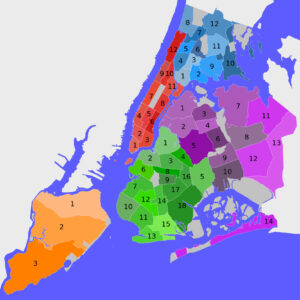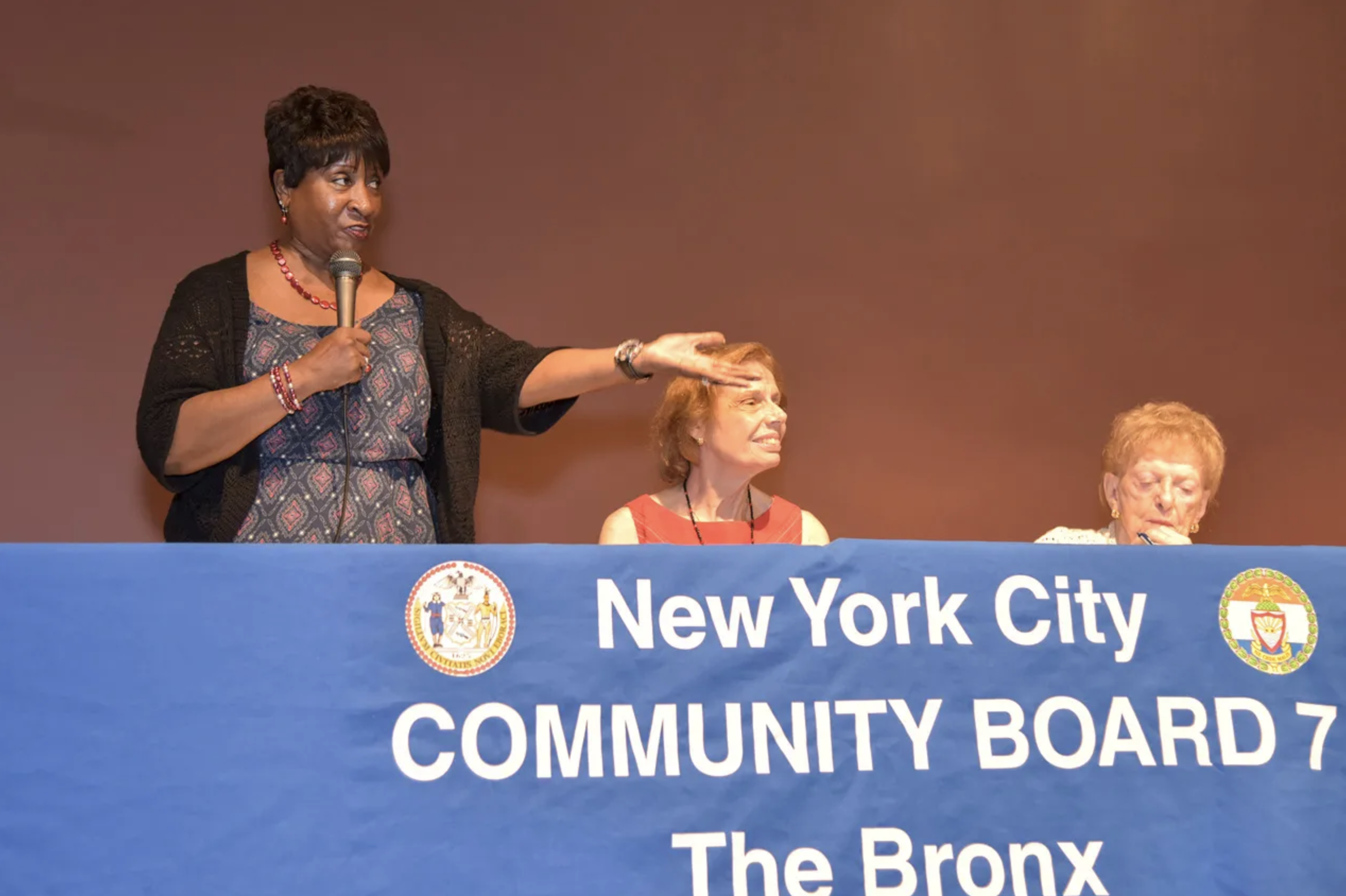Why Should You Join Your Community Board?
- You care about your neighborhood and want to be part of decision making.
- You are concerned about issues that affect quality of life, such as housing, education, health – to name a few.
- You want to make sure your concerns are heard by local government.
- You want to volunteer your time and meet other members of your community who also are interested in being involved and making a difference. It’s important to get a diverse range of views in Community Board meetings, yet women and people of color are still under-represented. To make sure YOU are represented, consider participating!
Finding Your Community Board
Every Community Board is identified by its borough and has a number corresponding to its Community District.
There are 12 community boards in the Bronx, 18 in Brooklyn, 12 in Manhattan, 14 in Queens, and 3 in Staten Island.
To find your Community Board, go to: http://maps.nyc.gov/doitt/nycitymap/
- Type in your address at the top.
- On the right side of the page, scroll down until you see “Neighborhood Information.”
- Click on that to see your Board and district information.

Ways to Participate in Your Community Board
1. Attend public meetings as a community member.
Anyone can attend regardless of whether they live in the specific district. Once you know your Community Board number, find its meeting schedule for the general public. Public hearings allow community members a chance to voice their opinions on ongoing neighborhood developments and initiatives.
Did you know that many Community Boards in NYC make attending possible without being in person – through Zoom and YouTube? Check your Community Board’s website to find out ways to attend.
2. Become a public member.
Public members are appointed by the chair of each community board and may serve on subcommittees. As a subcommittee member, you may volunteer services such as researching for a resource guide, or get to offer opinions on a new charter school opening in your neighborhood.
Becoming a public member is a great way to get to know decision-making procedures, current board members, and the general landscape of New York City politics. Some public members get the opportunity to sit in on meetings and interact with committee heads, public agencies, and partner organizations.
3. Apply to be a full board member.
Board members serve for two-year terms, and 25 seats open up every other year. Some boards require you to serve on one to two subcommittees. Time commitments vary, but subcommittees will meet at least once a month and the full Board meets every month.
Serving on your Community Board is an unpaid, volunteer position, requiring at least 10 hours a month. Serving on some committees requires specific expertise or experience. For example, the land use subcommittee may require specialized technical knowledge of zoning codes and variances. You can find more information about your community district and board by searching NYC Planning’s Community District Profiles.

TIP: Before applying, you may want to reach out to your Community Board Chair or District Manager about any special requirements. Some Boards may have residency or experience requirements, or require that you serve as a public member first.
Sources
Boisrond, Carl, and James Ramsay. “Ask a Reporter: What Do Community Boards Do?” Gothamist. https://gothamist.com/news/ask-a-reporter-what-do-community-boards-do.
“Chapter 69 – Community Districts and Coterminality of Services,” New York City Charter. The City of New York. https://nyccharter.readthedocs.io/c69/
“Community Boards,” NYC Mayor’s Community Affairs Unit. https://www1.nyc.gov/site/cau/community-boards/community-boards.page
“Community Boards.” NYC Civic Engagement Commission. https://www.nyc.gov/site/civicengagement/our-programs/community-boards.page.
“How to join your New York City community board,” Curbed New York. https://ny.curbed.com/2017/3/15/14918194/nyc-community-board-member-get-involved

 Make the Switch to our new mailing list!
Make the Switch to our new mailing list!